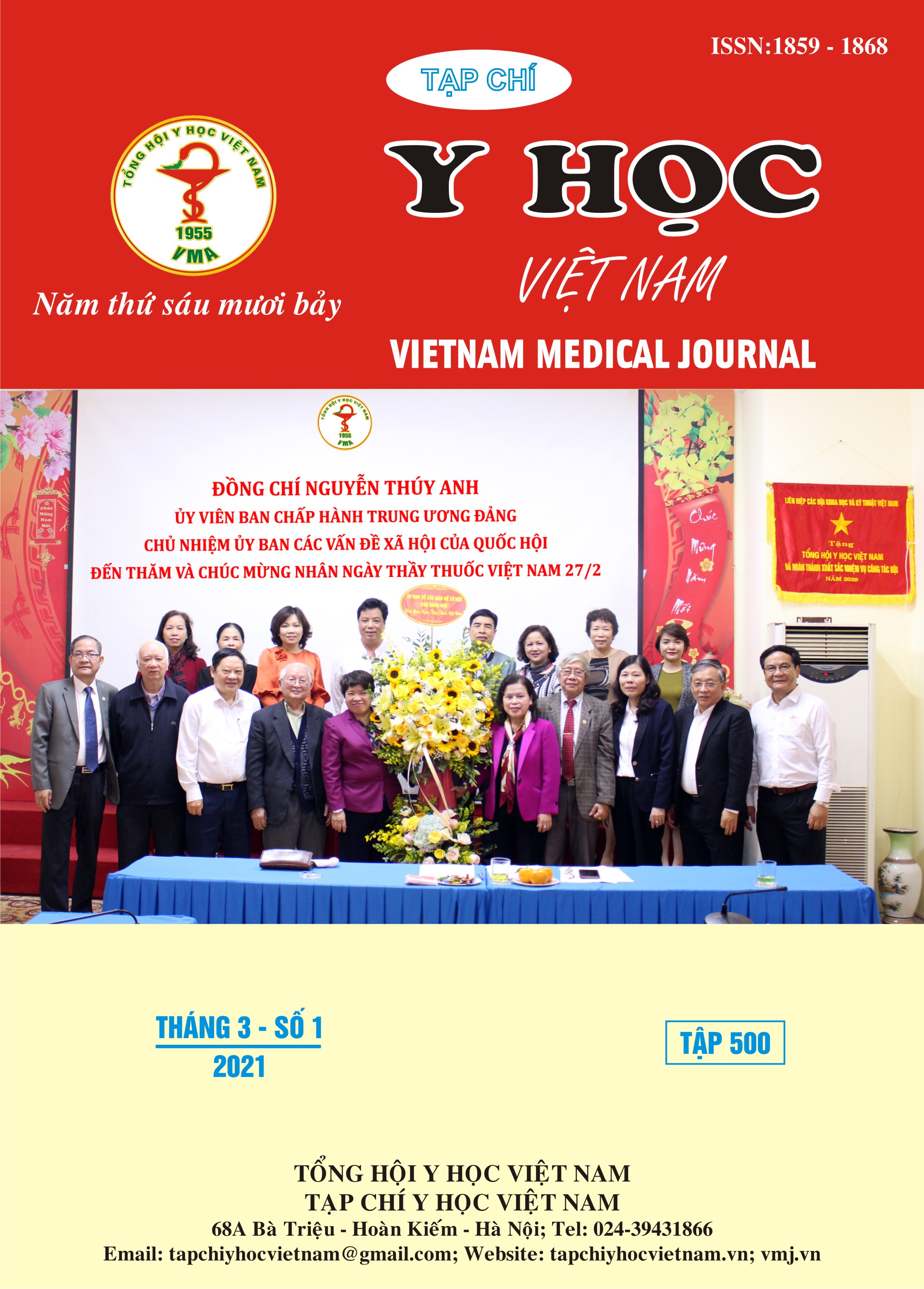VAI TRÒ CỦA CHƯƠNG TRÌNH QUẢN LÝ SỬ DỤNG KHÁNG SINH TRONG ĐIỀU TRỊ VIÊM PHÚC MẠC TẠI MỘT BỆNH VIỆN THÀNH PHỐ HỒ CHÍ MINH
Nội dung chính của bài viết
Tóm tắt
Mục tiêu: Bước đầu đánh giá hiệu quả của chương trình quản lý sử dụng kháng sinh trên tính hợp lý của việc sử dụng thuốc trong điều trị viêm phúc mạc. Đối tượng-Phương pháp nghiên cứu: Nghiên cứu cắt ngang mô tả trên tất cả hồ sơ bệnh án của bệnh nhân được chẩn đoán viêm phúc mạc tại một bệnh viện hạng nhất Thành phố Hồ Chí Minh từ 10/2018-3/2019 (giai đoạn 1, trước khi có chương trình quản lý sử dụng kháng sinh) và 10/2019 – 3/2020 (giai đoạn 2, có áp dụng các biện pháp trong chương trình quản lý sử dụng kháng sinh). Sự hợp lý của kháng sinh được đánh giá dựa trên phác đồ của Bộ Y tế, SIS 2017. Đánh giá hiệu quả của chương trình bằng cách so sánh tỷ lệ sử dụng kháng sinh hợp lý và kết quả điều trị. Kết quả: Có 104 bệnh nhân (giai đoạn 1) và 107 bệnh nhân (giai đoạn 2) được đưa vào nghiên cứu. Tuổi trung vị của mẫu nghiên cứu là 40-44 tuổi, nam giới chiếm 53,3-55,8%. Các chủng vi khuẩn phân lập được nhiều nhất là E. coli (63,5%) và K. pneumoniae (11,5%). Tỷ lệ sử dụng kháng sinh hợp lý ở giai đoạn 2 cao hơn có ý nghĩa thống kê so với giai đoạn 1 theo khuyến cáo SIS 2017 (43,9% so với 9,6%, p < 0,001). Kết quả điều trị khỏi ở cả 2 giai đoạn đều là 99%. Kết luận: Chương trình quản lý sử dụng kháng sinh tại bệnh viện giúp làm gia tăng tỷ lệ sử dụng kháng sinh hợp lý trong điều trị viêm phúc mạc.
Chi tiết bài viết
Từ khóa
kháng sinh, viêm phúc mạc, chương trình quản lý sử dụng kháng sinh
Tài liệu tham khảo
2. Mazuski JE., Tessier JM., May AK., et al. (2017), “The surgical infection society revised guidelines on the management of intra-abdominal infection”, Surg Infect, 18 (1), 1 – 76.
3. Bộ Y tế (2015), Hướng dẫn sử dụng kháng sinh, 159 - 192, 316 - 322.
4. Mazuski JE., Tessier JM., May AK., et al. (2017), “The surgical infection society revised guidelines on the management of intra-abdominal infection”, Surg Infect, 18 (1), 1 – 76.
5. Solomkin JS., Mazuski JE., Bradley JS., et al. (2010), “Diagnosis and management of complicated intra-abdominal infection in adults and children: Guidelines by the Surgical Infection Society and the Infectious Diseases Society of America”. Clin Infect Dis; 50, 133 – 164.
6. Massimo S., Catena F., Ansaloni L., et al. (2014), “Complicated intra-abdominal infections worldwide: The definitive data of the CIAOW Study”. World J Emerg Surg, 9, 37.
7. Montravers P., Lepape A., Dubreuil L., et al. (2009) “Clinical and microbiological profiles of community-acquired and nosocomial intra-abdominal infections: Results of the French prospective, observational EBIIA study”, J Antimicrob Chemother, 63, 785 – 794.
8. Trần Thị Thanh Nga, Nguyễn Tấn Cường, Phạm Hữu Thiện Chí, Đoàn Tiến Mỹ (2014), “Nhiễm khuẩn ổ bụng - các vi khuẩn thường gặp và khuynh hướng đề kháng kháng sinh”, Tạp chí Y Học TP. Hồ Chí Minh. 18 (2), 491-494.


